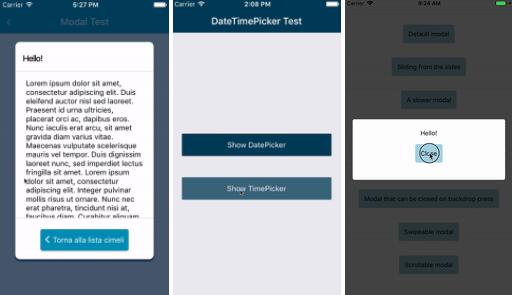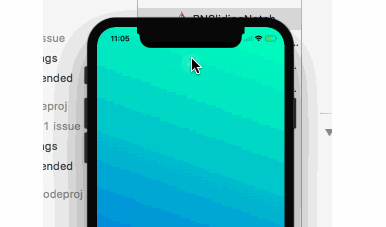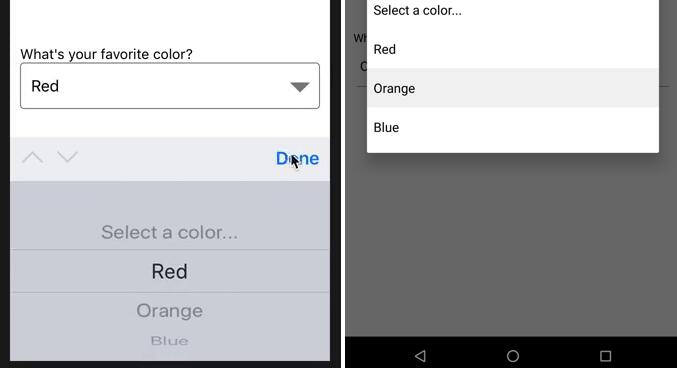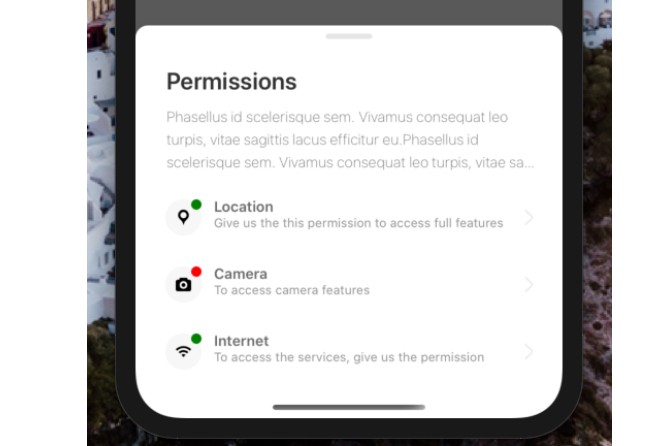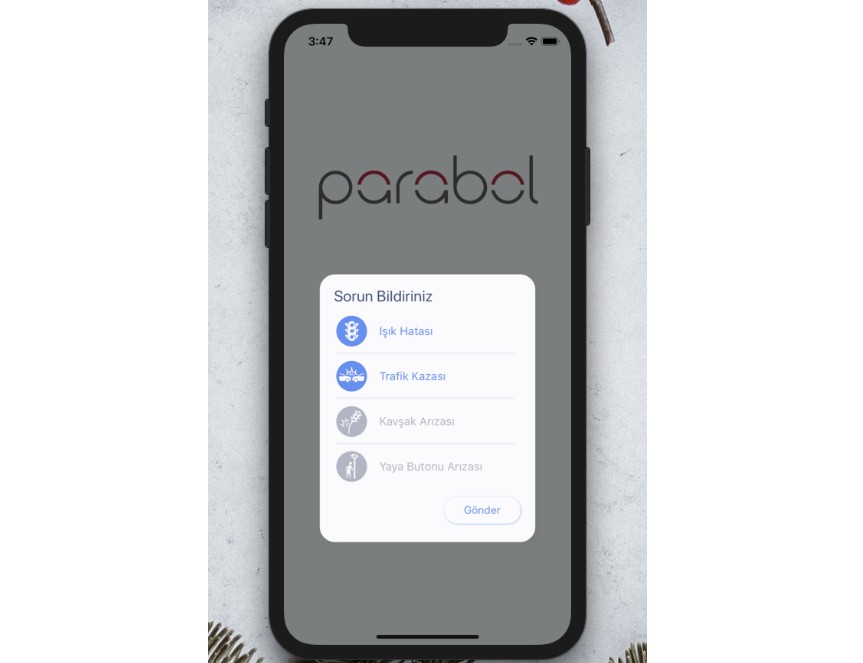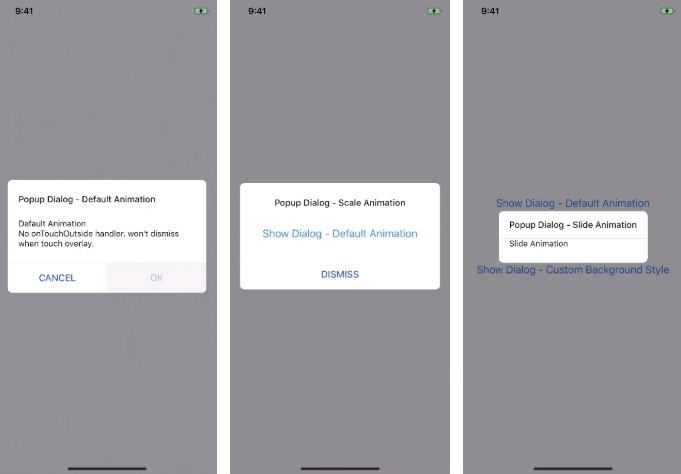react-native-modal
An enhanced, animated and customizable react-native modal.
Features
- Smooth enter/exit animations
- Plain simple and flexible APIs
- Customizable backdrop opacity, color and timing
- Listeners for the modal animations ending
- Resize itself correctly on device rotation
- Swipeable
- Scrollable
Demo
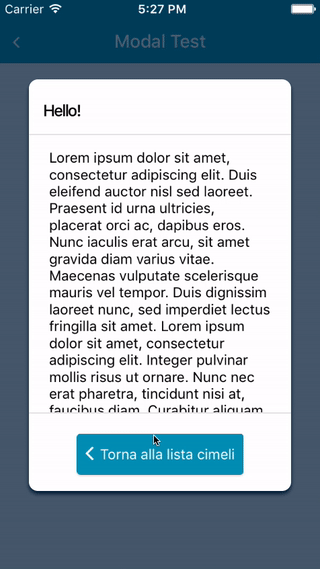


Setup
This library is available on npm, install it with: npm install --save react-native-modal or yarn add react-native-modal.
Usage
Since react-native-modal is an extension of the original react native modal, it works in a similar fashion react-native original modal.
- Import react-native-modal:
import Modal from "react-native-modal";
- Create a modal and nest its content inside of it:
render () {
return (
<View>
<Modal>
<View style={{ flex: 1 }}>
<Text>I am the modal content!</Text>
</View>
</Modal>
</View>
)
}
- Then simply show it by setting the
isVisibleprop to true:
render () {
return (
<View>
<Modal isVisible={true}>
<View style={{ flex: 1 }}>
<Text>I am the modal content!</Text>
</View>
</Modal>
</View>
)
}
The isVisible prop is the only prop you'll really need to make the modal work: you should control this prop value by saving it in your state and setting it to true or false when needed.
A complete example
The following example consists in a component (ModalTester) with a button and a modal.
The modal is controlled by the isModalVisible state variable and it is initially hidden, since its value is false.
Pressing the button sets isModalVisible to true, making the modal visible.
Inside the modal there is another button that, when pressed, sets isModalVisible to false, hiding the modal.
import React, { Component } from "react";
import { Text, TouchableOpacity, View } from "react-native";
import Modal from "react-native-modal";
export default class ModalTester extends Component {
state = {
isModalVisible: false
};
_toggleModal = () =>
this.setState({ isModalVisible: !this.state.isModalVisible });
render() {
return (
<View style={{ flex: 1 }}>
<TouchableOpacity onPress={this._toggleModal}>
<Text>Show Modal</Text>
</TouchableOpacity>
<Modal isVisible={this.state.isModalVisible}>
<View style={{ flex: 1 }}>
<Text>Hello!</Text>
<TouchableOpacity onPress={this._toggleModal}>
<Text>Hide me!</Text>
</TouchableOpacity>
</View>
</Modal>
</View>
);
}
}
For a more complex example take a look at the /example directory.
Available props
| Name | Type | Default | Description |
|---|---|---|---|
| animationIn | string or object | 'slideInUp' | Modal show animation |
| animationInTiming | number | 300 | Timing for the modal show animation (in ms) |
| animationOut | string or object | 'slideOutDown' | Modal hide animation |
| animationOutTiming | number | 300 | Timing for the modal hide animation (in ms) |
| avoidKeyboard | bool | false | Move the modal up if the keyboard is open |
| backdropColor | string | 'black' | The backdrop background color |
| backdropOpacity | number | 0.70 | The backdrop opacity when the modal is visible |
| backdropTransitionInTiming | number | 300 | The backdrop show timing (in ms) |
| backdropTransitionOutTiming | number | 300 | The backdrop hide timing (in ms) |
| children | node | REQUIRED | The modal content |
| isVisible | bool | REQUIRED | Show the modal? |
| onBackButtonPress | func | () => null | Called when the Android back button is pressed |
| onBackdropPress | func | () => null | Called when the backdrop is pressed |
| onModalHide | func | () => null | Called when the modal is completely hidden |
| onModalShow | func | () => null | Called when the modal is completely visible |
| onSwipe | func | null | Called when the swipeThreshold has been reached |
| scrollOffset | number | 0 | When > 0, disables swipe-to-close, in order to implement scrollable content |
| scrollOffsetMax | number | 0 | Used to implement overscroll feel when content is scrollable. See /example directory |
| scrollTo | func | null | Used to implement scrollable modal. See /example directory for reference on how to use it |
| swipeThreshold | number | 100 | Swiping threshold that when reached calls onSwipe |
| swipeDirection | string | null | Defines the direction where the modal can be swiped (can be 'up', 'down', 'left, or 'right') |
| useNativeDriver | bool | false | Defines if animations should use native driver |
| hideModalContentWhileAnimating | bool | false | Enhances the performance by hiding the modal content until the animations complete |
| style | any | null | Style applied to the modal |
